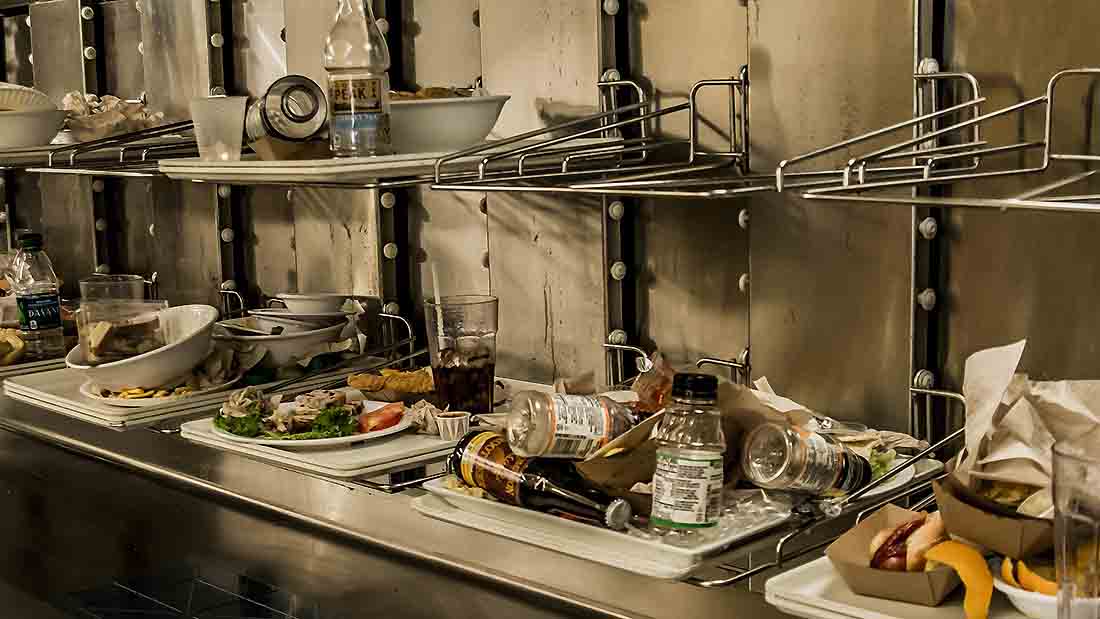By Jordan Gaines
As foodies and farmers alike gathered at the Chicago Food Tank Summit earlier this month at the University of Chicago’s Gleacher Center to discuss ways to maximize and sustain food, conversations of working with the food we already have continuously boiled down to two words: food waste.
“It’s kind of a divisive issue, some people say we need GMOs to feed people, and other people say other types of farming will keep the soil healthy, but I think one thing people are agreeing on is a reduction in food waste,” said Monica Eng, a WBEZ food and health reporter and moderator of a panel addressing food waste.
Thirty to 40 percent of the food supply is wasted annually, according to the United States Department of Agriculture, resulting in 133 billion pounds of food worth $161 billion being wasted in 2010, for example.
More than just an issue of food security, food waste poses environmental threats as it as it generates methane, a greenhouse gas that contributes to global warming and is the single largest component going to municipal landfills, helping to make them third-largest source of methane in the United States, according to the USDA.
“There’s been a lot of attention on the problem with food waste, the environmental impact and the social impact, and a lot less focus on the tangible real solutions that are there,” said panelist Sarah Vared, interim director of ReFED, a collaborative of food leaders working to meet the USDA’s 2030 goal to reduce food waste by half.
ReFED published a roadmap showing 27 solutions to reducing food waste, such as prevention, redistributing food and recycling wasted food as energy.
The “buy ugly” movement was offered up by panelists as another solution. Consumers are encouraged to buy and sell produce that doesn’t meet grocery stores’ strict cosmetic standards. Participants include Hungry Harvest, which delivers monthly boxes of “ugly” produce and Imperfect Produce, which sells rejected produce at a highly discounted rate.
In July Walmart announced it would start selling “ugly” apples in their Florida locations. These programs not only decrease food waste, but they increase access to fresh food.
Other efforts include Amp Your Good, which allows people to host online food drives, where donors can purchase fresh fruit and vegetables that get delivered to a charity or pantry of their choice. Two-thirds of the food donated through Amp Your Good goes to food pantries, according to CEO Patrick O’Neill, and the rest goes to shelters, soup kitchens and feeding programs through non-profits.
“Even compared to three years ago, the consciousness level of the people that are running these pantries about the need to try and source healthier food is really a dramatic change,” said O’Neill, also a panelist.
But with access must come education, such as teaching people how to use what they have.
“A lot of these food pantries now are offering fresh vegetables like squash, but people pass it over because they have no idea what to do with it,” said Ramona Baptiste, a chef who recently founded a non-profit, Reach One, Reach All, where she teaches young people ages 6-21 how to cook and eat with fresh food and produce.
Baptiste grew up on the South Side and took to healthy cooking and eating in middle age to manage her diabetes. She teaches people how to make “one-pot wonders” like bean chili and “10 dolla’ holla” meals that can be made from just $10 worth of ingredients.
“You can eat healthy without having to go to Mariano’s and Whole Foods,” said Baptiste, alluding to the proliferation of high-end grocery stores throughout Chicago. “It’s all about using what you have at home, using your Link card and using the food pantry and spreading it out to feed your family.”

